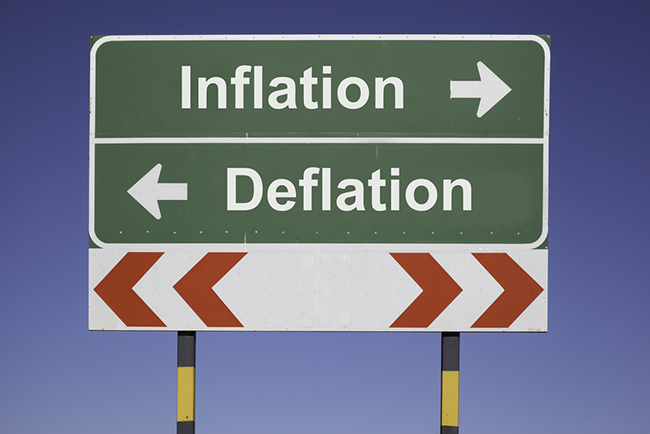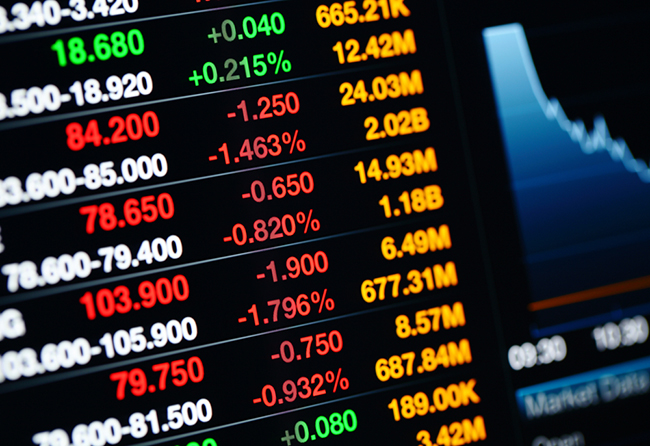To say I am a little excited about this article would be a dramatic understatement.
We tapped the minds of some of our favorite investors and experts to tell us what their biggest investing mistake was and how they fixed it.
Here are the panel of experts…
–
Todd Sullivan, Co-Founder and General Partner in Rand Strategic Partners.
–
Tobias Carlisle, Founder and managing director of Eyquem Investment Management, LLC, serves as portfolio manager of the Eyquem Fund LP.
–
Evan Bleker, Author of NetNetHunter.com, Net Net Hunter Newsletter.
–
Tim Melvin, Author of TimMelvin.com, Deep Value Letter, Banking on Profits.
–
Ben Carlson, Author of AWealthOfCommonSense.com, helps manage an investment portfolio for an endowment fund.
–
Nate Tobik, Author of OddBallStocks.com, Founder of CompleteBankData.com
–
Dave Waters, Author of OddBallStocks.com, Investment Manager of Alluvial Capital Management.
–
Kevin Graham, Author of CanadianValueInvesting.Blogspot.com.
–
Lane Sigurd, Author of ReminiscencesOfaStockblogger.com
The Questions:
* What was your biggest investing mistake?
* What did you do to fix it?
Here’s what our expert investors had to say about their mistakes and what they could have done to fix it.
(NOTE: We’d love to hear your biggest mistakes and what you did to fix it. Give us your thoughts in the comments section below).
 Biggest Mistake:
Biggest Mistake: My biggest mistakes almost always stem from buying companies where the balance sheet is deficient. Once such company was Caldor. Caldor was a discount retailer that was active in the Northeast, but nationally was a poor third to Wal-Mart Stores, Inc. (
WMT) and KMart. It came up with the bright idea of expanding the number of stores it had in the mid-90s without raising capital. It even turned down an opportunity to float junk bonds. I remember noting that the leverage seemed high. Still, it seemed very cheap, and one of my favorite value investors,
Michael Price, owned a little less than 10% of the common stock. So I bought some, and averaged down three times before the bankruptcy, and one time afterwards, until I learned Michael Price was selling his stake, and when he did so, he did it without any thought of what it would do to the stock price.
How He Could Have Fixed It: There were a number of lessons: 1) Don’t average down more than once, and only do so limitedly, without a significant analysis. This is where my portfolio rule seven came from, 2) Don’t engage in hero worship, and have initial distrust for single large investors until they prove to be fair to all outside passive minority investors, 3) Avoid overly indebted companies. Avoid asset liability mismatches. Portfolio rule three would have helped me here; 4) Analyze whether management has a decent strategy, particularly when they are up against stronger competition. The broader understanding of portfolio rule six would have steered me clear; 5) Impose a diversification limit. Even though I concentrate positions and industries in my investing, I still have limits. That’s another part of rule seven, which limits me from getting too certain.
 Biggest Mistake:
Biggest Mistake: I didn’t understand how the riskiness of stocks is relatively low in the accumulation phase and rises as the ratio as the ratio of investment capital to human capital increases. Consequently, I was too conservative when I was young. Below the age of 40, the saver actually seeks risk, as volatility early in the savings phase increases eventual wealth.
How He Could Have Fixed It: Invest early in life.
 Biggest Mistake:
Biggest Mistake: I certainly made a lot of mistakes. But I couldn’t single out the biggest one. I would say that my biggest mistake is not one investment. It is the methodology that led to the mistakes. I should have developed a checklist much earlier for my investment decision making process.
How He Could Have Fixed It: With the checklist, a lot of mistakes could have been avoided. Now my investment checklist checks the quality of the business, the valuation, and the recent business development. It is also a new feature on GuruFocus, where users can create and customize their own investment checklist. [Author’s Note: I have used the checklist on GuruFocus, and they are great.]
 Biggest Mistake:
Biggest Mistake: In 2002 I invested in McDonald’s due to the mad cow scare and its impact on the company. I held it and was feeling pretty smart as share rose >$40. In 2006 they spun off this little ‘burrito company’ as I called it named Chipotle. I knew nothing about the company as there weren’t any in my area yet. Upon receiving the shares in the spin I sold them shortly after for ~$50 thinking I got a good price for this small chain. They sit today at $647
How He Could Have Fixed It: The lesson here is before you develop an opinion about a company, you owe it to yourself to at least do work on it.
 Biggest Mistake:
Biggest Mistake: The mistake that most make is failing to faithfully follow the output of the model, preferring instead to substitute their own judgement. When they do so, they invariably underperform. It’s incredibly difficult to do it without substituting one’s own biases. It’s a mistake I’ve made a lot.
How He Could Have Fixed It: Research shows that most equity investors are best served by following simple statistical models like the Magic Formula.
 Biggest Mistake:
Biggest Mistake: The biggest mistake I ever made as an investor didn’t have to due with any individual stock pick — it was failing to accurately assess my own time and investment skill set which lead me to try to replicate the investment style of gifted people like
Warren Buffett and
Peter Lynch. These big named, fantastically successful, investors often make investing sound easy but laying behind their tremendous success are decades of dedicated study, a high degree of investment/business aptitude, and the time to apply a detailed investment strategy that’s often summed up in just a few sentences.
How He Could Have Fixed It: What I should have done was adopted a mechanical investment strategy since these strategies are easy to apply for average investors and very profitable. That shift would have turned years of early losses and frustration into an even longer record of great investment results.
 Biggest Mistake:
Biggest Mistake: I would say I’ve made a number of mistakes. It’s a very long list. But, I will say they usually have a common thread: I stretched the definition of margin of safety, where I was willing to pay up a little bit for a really good story. For example, Hercules Offshore (
HERO), we have taken a beating in that stock. We tested the financials for $70 a barrel of oil. I thought we were rock solid. I could not imagine a scenario in which oil was going under $70. Insiders in the company were buying, they owned a good deal of the company. They were a dominant driller in the Gulf, and the Gulf was coming back a little. Then oil prices went to $70, and then $60, and then $50, and now there’s no drilling in the Gulf. They’re cold stacking rigs, which cost a lot of money. So your margin of safety is completely shot. It’s gone. This is the first time I can remember, where we had high commodity prices, and you still had stocks trading below book value. In hindsight, that should have been a clue.
How He Could Have Fixed It: You do have to look at the extreme or unthinkable scenario on the downside, and not just the reasonable one.
 Biggest Mistake:
Biggest Mistake: The biggest mistake I made as an investor was believing early on in my career that the best way to achieve success in the markets was to outsmart the market or other investors. I was just out of business school and got the CFA designation. I was under the impression I could do no wrong. The market is a very humbling place, so eventually I learned that it’s really not about outsmarting other investors or the market as a whole, it’s about not outsmarting yourself.
How He Could Have Fixed It: Once I learned how to control
myself, my reactions and my behavioral biases and started to focus only on those areas that are within my control it really made things much simpler for me as an investor.
 Biggest Mistake:
Biggest Mistake: My biggest mistakes have all occurred when I’ve neglected to invest with a sufficient margin of safety. Smaller mistakes have occurred when I’ve rushed into investments instead of thinking over an idea for a few days.
How He Could Have Fixed It: The best way to counter-act these problems is to think through negative potential outcomes for an investment. Then ensure that the purchase price is low enough that if even the worst case scenario were to happen the investment wouldn’t lose money. Think it over for a few days and then invest.
 Biggest Mistake:
Biggest Mistake: My biggest mistake came from assuming a trend would last far longer than it actually did. When I bought Awilco Drilling, it was trading at 3.5x free cash flow and seemed poised to maintain that level of cash flow for years and years to come. Just six months later, the collapsing oil market made that cash flow outlook a distant memory and the stock fell 60%.
How He Could Have Fixed It: When dealing with cyclical industries, never assume the good times will last forever. Don’t assume lean times will, either. Always insist on a margin of safety to a conservative estimate of mid-cycle valuations.
 Biggest Mistake:
Biggest Mistake: The biggest mistake I have ever made was investing in technology back in 1999. Today I don’t consider it a mistake because I have learned so much and learning that lesson early in life has and will save me much more in the future. That said, here’s something with a little more meat on the bone: I invested in natural gas back before the shale gas revolution. It is playing out nearly exactly the same as oil today. Anyway, shale gas changed the nature of the industry on a permanent basis and I refused to believe the evidence. Some call this confirmation bias, but I prefer egocentric blindness. High decline rates, high capital costs, it’s only a short term fad…etc. If you check the EIA data, US NG production just reached 90 Bcf/day. It has gone up every year for 10 years. It continues to go up even though NG prices are at record lows and many companies are struggling. They were propped up by stripping liquids but that game is now over too. NG has been roughly sub 4/mcf for a decade.
How He Could Have Fixed It: “History never repeats itself, but it does rhythm.” The same thing is happening today in oil. I called this on my blog and it is still playing out. Oil will likely move lower sometime this year.
 Biggest Mistake:
Biggest Mistake: Unquestionably holding Potash Corp through the second half of 2008. I decided that the ag sector was safe enough to withstand the downturn. I underestimated the downturn, I overestimated the resilience of the potash market and I misjudged the investor base of the stock. It was around a 30% position for me at the time so it was very a painful experience. While the monetary loss was bad, the psychological loss was probably worse. I learned that regardless of how strongly you think you are right, there is still a decent chance you are not, or perhaps more subtlety, that the conditions that made you right will change and you will become wrong before you realize it.
How He Could Have Fixed It: In order not to repeat this sort of event I honestly believe that when the stocks you own start to turn against you, you just have to sell. It will incredibly painful and betray every instinct you have but it is necessary. To do this I think you have to prepare for it ahead of time by practicing non-attachment to what you own and by not fixating on the current value of what you own (since you will undoubtedly be selling at a lower price).
 Biggest Mistake:
Biggest Mistake: My biggest investing mistakes have come from companies with assets that are obviously worth more than the entire company but where there are issues that prevent a sale of the asset along with another piece of the business that consumes cash / value. The best example of this is probably Premier Exhibits (PRXI), which has some uniquely valuable Titanic assets which have extreme restrictions placed on them in a sale and are attached to a business that is very competitive. I think the most dangerous part of these investments is it makes it very easy to average down, as you can constantly focus on that large asset value and say “hey, those assets are worth $10 and the stock has traded down from $5 to $3; it’s time to back up the truck!” despite continued cash consumption or value deterioration from the other side of the business.
How He Could Have Fixed It: Focus on such things as; cash burn rate or the business’s probability of turnaround in deep value situations.
Tuesday, March 3, 2015 4:26 AM EDT
http://www.talkmarkets.com/content/investing-ideas--strategies/13-investors-share-their-biggest-investing-mistake-and-what-they-did-to-fix-it?post=59927



